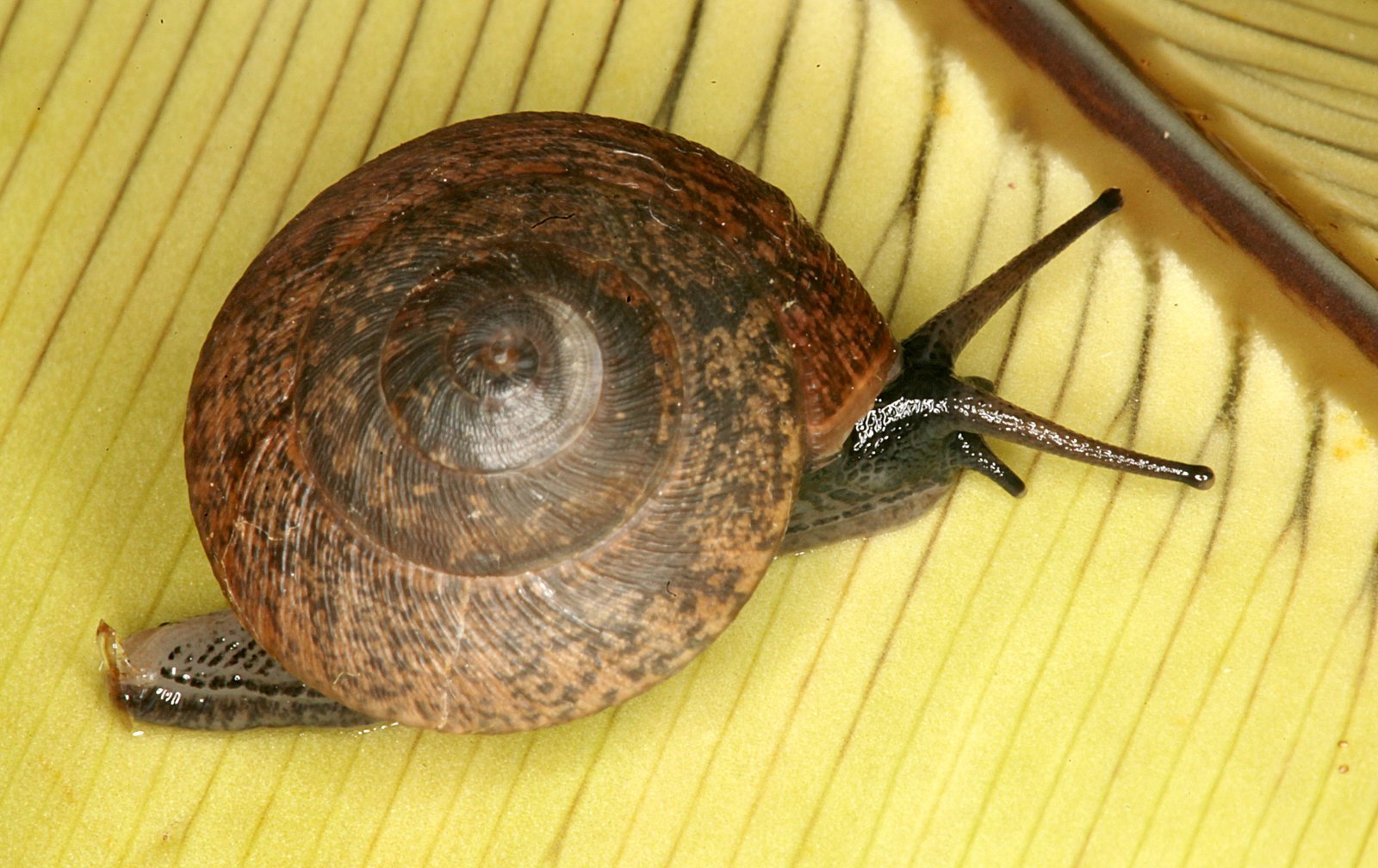Raised from the dead: Species assumed extinct rediscovered on Norfolk Island
Introduced rats and chickens on Norfolk Island love to eat native animals as snacks, and were thought to have wiped out the endemic Campbell’s Keeled Glass Snail … until we recently found a few individuals alive.
While surveying Norfolk Island land snails for the first time in nearly 20 years, Frank Koehler, Adnan Moussalli and I were taken by Norfolk Islander Mark Scott to a sheltered valley where he had found large and unusual snail shells. There we made the exciting and unexpected discovery of a single living population of Advena campbelli; a species that is currently listed as Extinct by the IUCN and as Critically Endangered by the Australian Government.

Advena campbelli, until recently feared to be extinct
Image: Adnan Moussalli© Museums Victoria
Norfolk Island, a small 35 km2 island situated 1,700 km from Sydney, has an astonishing diversity of endemic land snails. There are currently 70 described species, although these are very poorly known and it appears that the true number may be smaller, perhaps around 30-40 species. However, like many oceanic islands, Norfolk Island has lost most of its native vegetation due to clearing, and also has a large number of introduced pest species, including rats (both Polynesian and black rats), mice, cats and chickens, which have taken a heavy toll on the native fauna. There are also over 200 introduced plant species.
The endemic land snails of Norfolk Island range in size from 1 to 22 mm in shell diameter, exhibiting a wide range of shell shapes. Some are extremely flat, others elongated or almost round, and several reinforce their shells with an intricate sculpture. One species even sticks dirt to its shell for camouflage. Fossil records show most species were once widespread across the island. However, now they are found primarily in the National Park, an area of 6.5 km2 and the only remnant of the subtropical rainforest that once covered the island. The National Park was established in 1984 and has an extensive weeding and pest control program; however, before this time the area was unfenced, and cattle grazed there freely.
It is estimated that the black rats were introduced around 1943. From around this time, all of the large land snails on the island (with shells of more than 10 mm in diameter) declined dramatically and some even became extinct due to rat predation. Currently, the last five large species are all listed as Critically Endangered under the Australian Government’s EPBC Act. Three are assumed extinct on Norfolk Island but may still survive on nearby Phillip Island; one (Mathewsoconcha belli) is extinct in the National Park but survives in a single recreational reserve; and the last, Advena campbelli, was last recorded from empty shells found in the National Park.
In late February this year, the Australian Museum was contacted by Mark Scott, a Norfolk Island local, who had found some large snail shells when conducting surveys for rare plants in the National Park. Luckily, we were in the process of preparing for fieldwork on Norfolk Island, and in early March we met with Mark in the Norfolk Island National Park. We were able to confirm the presence of a small living population of Advena campbelli, confined to a single rainforest gully dotted with tree ferns.
This beautiful but poorly known species is still not out of danger. Many of the empty shells found in the gully were clearly rat-predated, and there were also signs that the area is occupied by feral chickens, another significant predator of snails on Norfolk Island. With rats and chickens still common on the island, a captive breeding program may be the only chance to ensure their survival.
We also located the last known population of Critically Endangered species Mathewsoconcha belli in Hundred Acre Reserve. However, this species appears to have suffered high mortality rates after two years of extremely dry weather on the island, and its numbers are significantly reduced. We were unable to survey Phillip Island due to adverse weather conditions, so the status of the last three Critically Endangered species is still unconfirmed.

Mathewsoconcha belli, a Critically Endangered Norfolk Island endemic.
Image: Adnan Moussalli© Museums Victoria
It is clear from our surveys that while most of the smaller species are common and abundant in the National Park, the larger species are still heavily impacted by predation from rodents and feral chickens. Climate change is another significant factor affecting populations that are already under high predation pressure. Immediate action, including the implementation of a captive breeding program, may be the only way to save these Critically Endangered species from extinction.
Dr Isabel Hyman, Scientific Officer, Malacology, Australian Museum Research Institute





